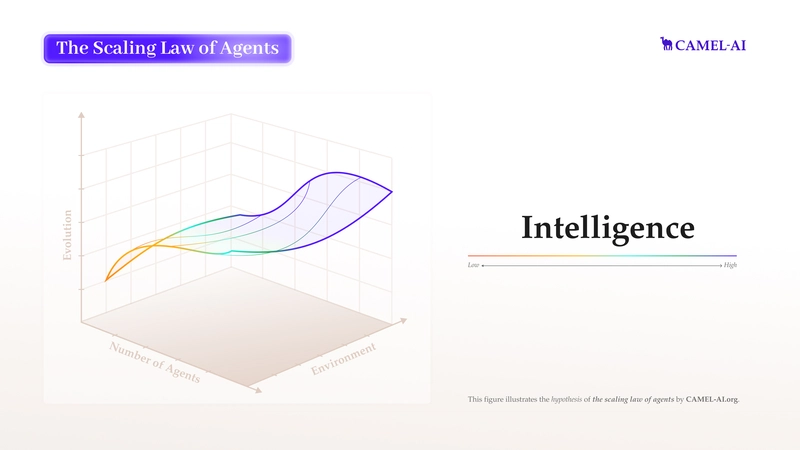Loss Functions and NN Parameter Accumulation in micrograd
Hi there! I'm Shrijith Venkatrama, founder of Hexmos. Right now, I’m building LiveAPI, a tool that makes generating API docs from your code ridiculously easy. A Sample Dataset and Comparing With Predictions In the following dataset, we have 4 example inputs/outputs. And each input has 3 numbers. We use the neural network (MLP object) defined in last post to do some predictions on each input. xs = [ [2.0, 3.0, -1.0], [3.0, -1.0, 0.5], [0.5, 1.0, 1.0], [1.0, 1.0, -1.0], ] ys = [1.0, -1.0, -1.0, 1.0] # desired targets ypred = [n(x) for x in xs] ypred When I run this I get some predictions which are either a bit less than required or more: A Skeleton to Build a Loss Function Code: We define a loss variable, and define in the following way: Find the difference between actual output vs predicted output Square the difference (to remove negative sum) Sum all such squares of differences for whole input/output set loss = sum((yout - ygt)**2 for ygt, yout in zip(ys, ypred)) loss.grad = 1 loss.backward() n.layers[0].neurons[0].w[0].grad Once we have the loss node, we can run backward propagation to get gradients for each node. When we do draw_dot(loss) we get a huge graph consisting of 4 forward passes corresponding to the 4 examples above and loss on top of those. Gathering All Neural Network Parameters And Operating On Them Pay attention to the parameters() method in each of the classes below - where we collect the various parameters at every level (neuron, layer, MLP) for convenience: class Neuron: def __init__(self, nin): self.w = [Value(random.uniform(-1,1)) for _ in range(nin)] self.b = Value(random.uniform(-1,1)) def __call__(self, x): # w * x + b act = sum((wi * xi for wi, xi in zip(self.w, x)), self.b) out = act.tanh() return out def parameters(self): return self.w + [self.b] class Layer: def __init__(self, nin, nout): self.neurons = [Neuron(nin) for _ in range(nout)] def __call__(self, x): outs = [n(x) for n in self.neurons] return outs[0] if len(outs) == 1 else outs def parameters(self): params = [] for neuron in self.neurons: params.extend(neuron.parameters()) return params class MLP: def __init__(self, nin, nouts): sz = [nin] + nouts self.layers = [Layer(sz[i], sz[i+1]) for i in range(len(nouts))] def __call__(self, x): for layer in self.layers: x = layer(x) return x def parameters(self): params = [] for layer in self.layers: params.extend(layer.parameters()) return params Now when I do n.parameters() I get all the parameters in the neural network: Reference The spelled-out intro to neural networks and backpropagation: building micrograd - YouTube

Hi there! I'm Shrijith Venkatrama, founder of Hexmos. Right now, I’m building LiveAPI, a tool that makes generating API docs from your code ridiculously easy.
A Sample Dataset and Comparing With Predictions
In the following dataset, we have 4 example inputs/outputs. And each input has 3 numbers.
We use the neural network (MLP object) defined in last post to do some predictions on each input.
xs = [
[2.0, 3.0, -1.0],
[3.0, -1.0, 0.5],
[0.5, 1.0, 1.0],
[1.0, 1.0, -1.0],
]
ys = [1.0, -1.0, -1.0, 1.0] # desired targets
ypred = [n(x) for x in xs]
ypred
When I run this I get some predictions which are either a bit less than required or more:
A Skeleton to Build a Loss Function
Code:
We define a loss variable, and define in the following way:
- Find the difference between actual output vs predicted output
- Square the difference (to remove negative sum)
- Sum all such squares of differences for whole input/output set
loss = sum((yout - ygt)**2 for ygt, yout in zip(ys, ypred))
loss.grad = 1
loss.backward()
n.layers[0].neurons[0].w[0].grad
Once we have the loss node, we can run backward propagation to get gradients for each node.
When we do draw_dot(loss) we get a huge graph consisting of 4 forward passes corresponding to the 4 examples above and loss on top of those.
Gathering All Neural Network Parameters And Operating On Them
Pay attention to the parameters() method in each of the classes below - where we collect the various parameters at every level (neuron, layer, MLP) for convenience:
class Neuron:
def __init__(self, nin):
self.w = [Value(random.uniform(-1,1)) for _ in range(nin)]
self.b = Value(random.uniform(-1,1))
def __call__(self, x):
# w * x + b
act = sum((wi * xi for wi, xi in zip(self.w, x)), self.b)
out = act.tanh()
return out
def parameters(self):
return self.w + [self.b]
class Layer:
def __init__(self, nin, nout):
self.neurons = [Neuron(nin) for _ in range(nout)]
def __call__(self, x):
outs = [n(x) for n in self.neurons]
return outs[0] if len(outs) == 1 else outs
def parameters(self):
params = []
for neuron in self.neurons:
params.extend(neuron.parameters())
return params
class MLP:
def __init__(self, nin, nouts):
sz = [nin] + nouts
self.layers = [Layer(sz[i], sz[i+1]) for i in range(len(nouts))]
def __call__(self, x):
for layer in self.layers:
x = layer(x)
return x
def parameters(self):
params = []
for layer in self.layers:
params.extend(layer.parameters())
return params
Now when I do n.parameters() I get all the parameters in the neural network:
Reference
The spelled-out intro to neural networks and backpropagation: building micrograd - YouTube









































































































































































![[The AI Show Episode 142]: ChatGPT’s New Image Generator, Studio Ghibli Craze and Backlash, Gemini 2.5, OpenAI Academy, 4o Updates, Vibe Marketing & xAI Acquires X](https://www.marketingaiinstitute.com/hubfs/ep%20142%20cover.png)






























































































































![[DEALS] The Premium Learn to Code Certification Bundle (97% off) & Other Deals Up To 98% Off – Offers End Soon!](https://www.javacodegeeks.com/wp-content/uploads/2012/12/jcg-logo.jpg)
![From drop-out to software architect with Jason Lengstorf [Podcast #167]](https://cdn.hashnode.com/res/hashnode/image/upload/v1743796461357/f3d19cd7-e6f5-4d7c-8bfc-eb974bc8da68.png?#)








































































































.png?#)





(1).jpg?width=1920&height=1920&fit=bounds&quality=80&format=jpg&auto=webp#)





























_Christophe_Coat_Alamy.jpg?#)
.webp?#)
.webp?#)











































































































![Apple Considers Delaying Smart Home Hub Until 2026 [Gurman]](https://www.iclarified.com/images/news/96946/96946/96946-640.jpg)
![iPhone 17 Pro Won't Feature Two-Toned Back [Gurman]](https://www.iclarified.com/images/news/96944/96944/96944-640.jpg)
![Tariffs Threaten Apple's $999 iPhone Price Point in the U.S. [Gurman]](https://www.iclarified.com/images/news/96943/96943/96943-640.jpg)






































































































































